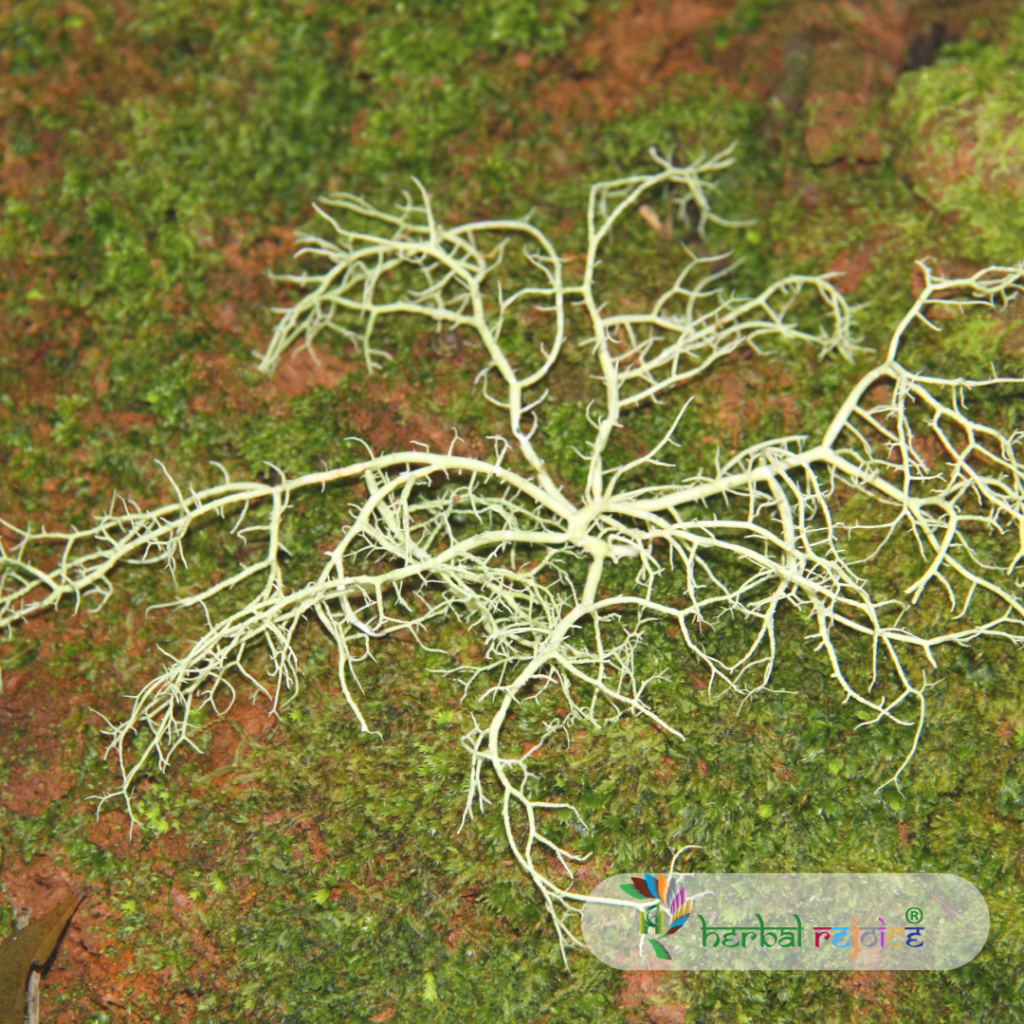Introduction:
Usnea longissima (Ach) is a species of lichen that belongs to the Usneaceae family. This unique organism can be commonly found in the temperate and alpine regions of the Himalayas, where it grows as a moss on trees. Known as “Ushnaa” in Unani medicine and simply as “lichen” in English, Usnea longissima has been traditionally used for its medicinal properties. In this article, we will explore the various health benefits of Usnea longissima, as well as its key applications and scientific properties.
Medicinal Properties and Uses:
One of the key applications of Usnea longissima is its use as an expectorant and in the treatment of ulcers. In traditional Unani medicine, it has been valued for its ability to promote expectoration and relieve respiratory discomfort. Additionally, Usnea longissima has gained recognition in modern herbal medicine for its anti-inflammatory properties. The German Commission E has approved the use of Usnea barbata, Usnea florida, Usnea hirta, and Usnea plicata (all different species of Usnea) for the treatment of mild inflammations of the oral and pharyngeal mucosa.
Furthermore, Usnea preparations have shown promising antibacterial and antifungal activities. Herbalists in North America regularly use Usnea to combat infections caused by Gram-positive bacteria, both locally and systemically. It has also proven effective against Candida albicans, a common fungal pathogen. These antimicrobial properties make Usnea longissima a valuable natural remedy for various infections.

Scientific Properties of Usnea Longissima:
Usnea longissima contains several bioactive compounds that contribute to its medicinal properties. It primarily contains 3-4% usnic acid, a potent antimicrobial agent. Usnic acid has been extensively studied for its anti-tubercular activity, making it a promising candidate for the treatment of tuberculosis. Usnea longissima also contains barbatic acid and arabitol, which possess similar antimicrobial properties. Barbatic acid, in particular, inhibits the growth of Streptococcus haemolyticus and pneumococcus sp., while also inhibiting the growth of the tubercle bacillus.
Conclusion:
Usnea longissima (Ach) holds great potential as a natural remedy for various infections and inflammations. Its traditional use as an expectorant and ulcer treatment is backed by scientific evidence, with the German Commission E recognizing its efficacy for mild inflammations of the oral and pharyngeal mucosa. Furthermore, its antibacterial and antifungal properties make it a valuable tool in fighting infections caused by Gram-positive bacteria and Candida albicans. With its high content of usnic acid, barbatic acid, and arabitol, Usnea longissima shows promise for the treatment of tuberculosis and other microbial infections. Consider incorporating Usnea longissima into your herbal regimen for its numerous health benefits.
Frequently Asked Questions
What is Usnea longissima (Ach)?
Usnea longissima (Ach) is a species of lichen that grows as a moss on trees in the temperate and alpine regions of the Himalayas.
What is the traditional use of Usnea longissima in Unani medicine?
In Unani medicine, Usnea longissima is used as an expectorant and in the treatment of ulcers.
What are the anti-inflammatory properties of Usnea longissima?
Usnea longissima has been recognized for its anti-inflammatory properties and has been approved by the German Commission E for the treatment of mild inflammations of the oral and pharyngeal mucosa.
How does Usnea longissima combat infections?
Usnea longissima has antimicrobial properties and can combat infections caused by Gram-positive bacteria and Candida albicans.
What bioactive compounds are found in Usnea longissima?
Usnea longissima contains usnic acid, barbatic acid, and arabitol, which contribute to its medicinal properties.
What is the usnic acid content in Usnea longissima?
Usnea longissima primarily contains 3-4% usnic acid, which is a potent antimicrobial agent.
What is usnic acid known for?
Usnic acid has been extensively studied for its anti-tubercular activity, making it a promising candidate for the treatment of tuberculosis.
What other species of Usnea have medicinal properties?
Other species of Usnea, such as Usnea barbata, Usnea florida, Usnea hirta, and Usnea plicata, have been recognized for their medicinal properties by the German Commission E.
How does Usnea longissima promote expectoration?
Usnea longissima has expectorant properties, which can help promote the clearance of mucus from the respiratory system.
Can Usnea longissima be used to treat respiratory discomfort?
Yes, Usnea longissima has been traditionally used to relieve respiratory discomfort.
What infections can Usnea longissima combat?
Usnea longissima can combat infections caused by Gram-positive bacteria and Candida albicans.
What are the key applications of Usnea longissima?
The key applications of Usnea longissima include expectorant, ulcer treatment, and treatment of mild inflammations of the oral and pharyngeal mucosa.
How does Usnea longissima inhibit the growth of bacterial pathogens?
Usnea longissima contains bioactive compounds, such as usnic acid and barbatic acid, which inhibit the growth of bacterial pathogens like Streptococcus haemolyticus and pneumococcus sp.
Is Usnea longissima effective against tuberculosis?
Usnic acid, found in Usnea longissima, has shown promising anti-tubercular activity, suggesting its potential effectiveness against tuberculosis.
Does Usnea longissima have antifungal properties?
Yes, Usnea longissima has antifungal properties and has been shown to be effective against Candida albicans.
How can Usnea longissima be incorporated into a herbal regimen?
Usnea longissima can be used in various forms, such as tinctures, teas, or capsules, and can be incorporated into a herbal regimen for its health benefits.
Are there any side effects of using Usnea longissima?
While Usnea longissima is generally considered safe, it is always recommended to consult with a healthcare professional before incorporating any new herbal remedy into your regimen.
Is Usnea longissima safe for children?
The safety of Usnea longissima in children has not been extensively studied, so it is best to consult with a pediatrician before using it in children.
Can Usnea longissima be used alongside other medications?
It is always recommended to consult with a healthcare professional before using Usnea longissima alongside other medications to ensure there are no potential interactions.
Where can Usnea longissima be found?
Usnea longissima can be commonly found in the temperate and alpine regions of the Himalayas, where it grows as a moss on trees.


